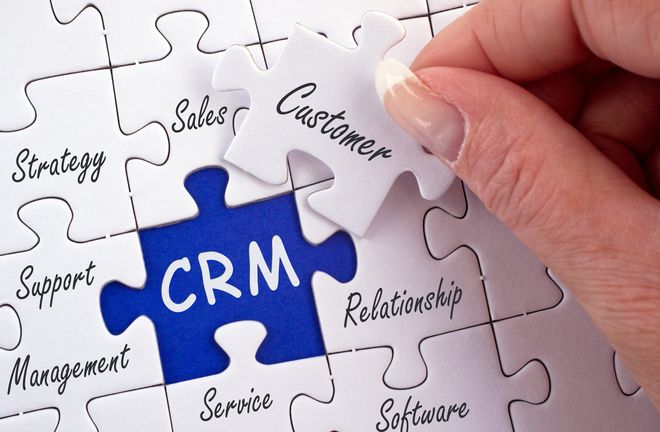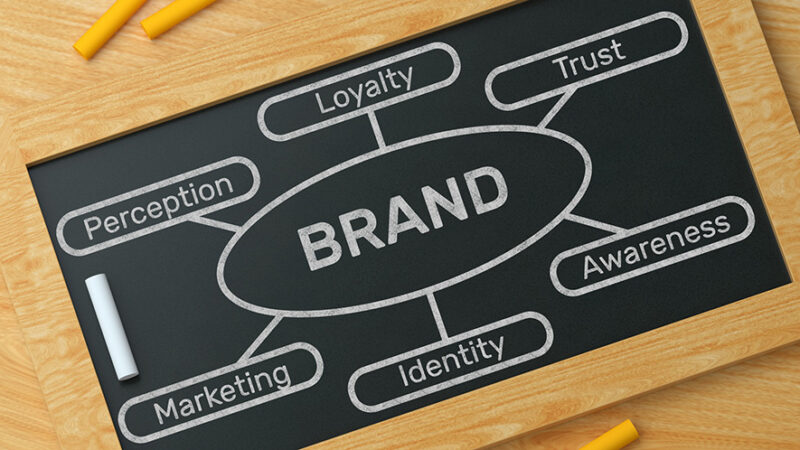What Is CRM: All You Need to Know About CRM

Organizations can no longer ignore the term Customer Relationship Management (CRM). According to research by Gartner, CRM took most of the software market revenue in 2017. For 2019 and 2020, the organization also predicts that the percentage of investment in CRM will increase exponentially. Why do companies choose to invest in client management software? For what type of company is it interesting? How do you start a CRM implementation?
Table of Contents
What does the term CRM comprise?
Customer relationship management (CRM) is the methodology that focuses on storing, analyzing and using all relevant customer information. What is considered relevant customer information naturally depends on the type of company and customers. In some companies, it consists of maintaining a structure of contact details or actions carried out in relation to customers. Other companies require having more advanced functionalities and business intelligence (BI) within the CRM to understand the customer well .
The number of different customer relationship management strategies and packages makes it difficult for companies to decide which one is the best fit for their business. Therefore, a comparison of the different existing systems can be found in the CRM Guide . With this information you can check which system is best suited to the needs of your company.
What possibilities and functionalities does a CRM system offer?
The implementation of a CRM system can offer some important advantages to a company. However, these advantages are not always very relevant. Therefore, when selecting a system, you must check whether the investment is worth it . That is, you must calculate what the return on investment (ROI) will be . Companies that decide to invest in a Customer Relationship Management package generally do so for (one of) the following reasons:
A single point of information for Customer Service
Customers are increasingly demanding when it comes to hiring a competitive service . A company that can quickly and effectively solve doubts or problems, acquire an immediate advantage over the competition. For this reason, companies want to remedy or prevent customer information from being distributed between different systems and people. When all customer information such as placed orders, past communications, opinions, and customer meeting minutes are in one place , this also ensures a consistent and consistent customer experience. Of course, employees can see what a colleague has talked about with the customer in the previous contact.
Optimizing customer contact is also important for B2B relationships . In this case, there is often even more at stake. A break in trust with a business partner usually means the end of the collaboration between both parties.
Customer loyalty is promoted
An investigation indicates that the priority of commercial companies should be in the retention of existing customers. A lasting customer relationship results in more customer purchases, and requires less investment of effort and capital. A consistent connection is also important for companies that don’t have traditional clients but members. After all, a stable member base ensures a much smoother business management than the continuous connection of new members. In this way, time and money are saved.
The degree of retention of existing customers is highly dependent on the performance of customer service. Effective customer service resides above all in satisfying existing customers. However, customers have higher and higher expectations. They also want a personalized service . For example, customers or members expect to receive offers or communications that concern them. The newsletter general or call representatives are increasingly ignored. Therefore, marketing and sales make more and more use of CRM to gain greater knowledge and thus increase sales or collaboration possibilities.
The collection, analysis and use of data to connect with customers will be carried out by each company in a different way. However, there are some basic principles common to almost all companies. The CRM Guide contains a list with the most recurrent and important information for customer loyalty and how it can be used in a business.
The transfer of reports from Marketing to Sales is promoted
Many companies have a sales and marketing department that work together to maintain or drive sales. Generally, the marketing department is the first to start using CRM. Based on the CRM data, such as opinions, (personal) preferences and customer history, marketing campaigns and activities are created to retain existing customers and to attract new customers .
With this addition, the sales department gets back to work. Depending on the reactions that the marketing activities receive, sales employees carry out certain actions, such as following up on requests for information or actively and personally reaching out to potential customers.
Ideally, therefore, marketing and sales work closely together. When a customer goes to the sales department varies depending on the company. Generally, this step occurs the moment a customer is close to making a purchase decision. In this transfer it is also important that all relevant information is transferred interdepartmentally. By allowing marketing and sales departments to share the same CRM system, companies optimize collaboration.
Design and fulfillment of new marketing and sales strategies
To reach out to both existing and potential customers, companies also continue to come up with new strategies. With that, existing customer data turns out to be a gold mine. The success of previous campaigns can be directly related to shopping behaviors. The CRM helps the marketing and sales departments of a company by collecting and analyzing information about it:
The success of the campaigns
- What campaigns generated interest from new customers?
- What campaigns had a positive effect on the interest of existing customers?
Sales success
- What communication channels were the ones that made customers loyal or made them buy something? (calls, e-mails, social networks, …)
- What forms of (internal) communication have resulted in a purchase or closer collaboration?
- Is there a difference between new and existing customers?
- Is there a difference between the customer groups? (for example, families and singles, generational differences, commercial or private client, …)
Second, the strategies of the marketing and sales departments often base their strategies on market research . For example, an investigation can be made on what is the ideal language for advertising posters in Spain. It is very likely that this is not the same as in the United States.
By saving the results of this type of research in the CRM, the marketing and sales departments of a company try to have a better vision of the identity of (potential) customers. The more you know your customers, the more direct and efficient your strategies will be.
What Does It Mean By CRM?
Customer relationship management (CRM) is the methodology that focuses on storing, analyzing and using all relevant customer information. What is considered relevant customer information naturally depends on the type of company and customers. In some companies, it consists of maintaining a structure of contact details or actions carried out in relation to customers. Other companies require having more advanced functionalities and business intelligence (BI) within the CRM to understand the customer well .
The number of different customer relationship management strategies and packages makes it difficult for companies to decide which one is the best fit for their business. Therefore, a comparison of the different existing systems can be found in the CRM Guide . With this information you can check which system is best suited to the needs of your company.
What possibilities and functionalities does a CRM system offer?
The implementation of a CRM system can offer some important advantages to a company. However, these advantages are not always very relevant. Therefore, when selecting a system, you must check whether the investment is worth it . That is, you must calculate what the return on investment (ROI) will be . Companies that decide to invest in a customer relationship management package generally do so for (one of) the following reasons:
A single point of information for Customer Service
Customers are increasingly demanding when it comes to hiring a competitive service . A company that can quickly and effectively solve doubts or problems, acquire an immediate advantage over the competition. For this reason, companies want to remedy or prevent customer information from being distributed between different systems and people. When all customer information such as placed orders, past communications, opinions, and customer meeting minutes are in one place , this also ensures a consistent and consistent customer experience. Of course, employees can see what a colleague has talked about with the customer in the previous contact.
Optimizing customer contact is also important for B2B relationships . In this case, there is often even more at stake. A break in trust with a business partner usually means the end of the collaboration between both parties.
Customer loyalty is promoted
An investigation indicates that the priority of commercial companies should be in the retention of existing customers. A lasting customer relationship results in more customer purchases, and requires less investment of effort and capital. A consistent connection is also important for companies that don’t have traditional clients but members. After all, a stable member base ensures a much smoother business management than the continuous connection of new members. In this way, time and money are saved.
The degree of retention of existing customers is highly dependent on the performance of customer service. Effective customer service resides above all in satisfying existing customers. However, customers have higher and higher expectations. They also want a personalized service . For example, customers or members expect to receive offers or communications that concern them. The newsletter general or call representatives are increasingly ignored. Therefore, marketing and sales make more and more use of CRM to gain greater knowledge and thus increase sales or collaboration possibilities.
The collection, analysis and use of data to connect with customers will be carried out by each company in a different way. However, there are some basic principles common to almost all companies. The CRM Guide contains a list with the most recurrent and important information for customer loyalty and how it can be used in a business.
The transfer of reports from Marketing to Sales is promoted
Many companies have a sales and marketing department that work together to maintain or drive sales. Generally, the marketing department is the first to start using CRM. Based on the CRM data, such as opinions, (personal) preferences and customer history, marketing campaigns and activities are created to retain existing customers and to attract new customers .
With this addition, the sales department gets back to work. Depending on the reactions that the marketing activities receive, sales employees carry out certain actions, such as following up on requests for information or actively and personally reaching out to potential customers.
Ideally, therefore, marketing and sales work closely together. When a customer goes to the sales department varies depending on the company. Generally, this step occurs the moment a customer is close to making a purchase decision. In this transfer it is also important that all relevant information is transferred interdepartmentally. By allowing marketing and sales departments to share the same CRM system, companies optimize collaboration.
Design and fulfillment of new marketing and sales strategies
To reach out to both existing and potential customers, companies also continue to come up with new strategies. With that, existing customer data turns out to be a gold mine. The success of previous campaigns can be directly related to shopping behaviors. The CRM helps the marketing and sales departments of a company by collecting and analyzing information about it:
The success of the campaigns
- What campaigns generated interest from new customers?
- What campaigns had a positive effect on the interest of existing customers?
Sales success
- What communication channels were the ones that made customers loyal or made them buy something? (calls, e-mails, social networks, …)
- What forms of (internal) communication have resulted in a purchase or closer collaboration?
- Is there a difference between new and existing customers?
- Is there a difference between the customer groups? (for example, families and singles, generational differences, commercial or private client, …)
Second, the strategies of the marketing and sales departments often base their strategies on market research . For example, an investigation can be made on what is the ideal language for advertising It is very likely that this is not the same as in the United States.
By saving the results of this type of research in the CRM, the marketing and sales departments of a company try to have a better vision of the identity of (potential) customers. The more you know your customers, the more direct and efficient your strategies will be.
A word of advice: A CRM system can offer several benefits to a company, but, of course, this is still a tool. The success of a software resides in the use that is made of it. In the CRM Guide , project managers can find a list of common mistakes in using a CRM solution.
Choosing a suitable CRM system
Normally, when choosing a specific CRM system (vendor) , you don’t just have to take into account the sector or the size of a company. The type of clients of the company is more important. In fact, they determine the range of customer management. In addition, it must also be decided whether the CRM is implemented as a separate solution ( satellite system ), or as part of other business software. Finally, the structure of the company and the desired level of security are also decisive factors.
What customers should be included in the CRM?
The term “customer” can be interpreted in many ways. Its more traditional meaning is that which dictates that a customer is the person or company that buys a product or hires a service . However, already in this traditional definition one can glimpse the divergences of its meaning. In addition, other types of relationships can also be managed in CRM software, such as members or even business partners.
The different types of relationships that must be managed also reflect the type of CRM system that must be chosen. An affiliate organization will tailor its system more to individual communication, and marketing or sales functionality is not a must. However, a non-profit organization can also make use of the traditional and commercial functionalities of a CRM. For example, a non-governmental organization (NGO) can make use of marketing functionality, can run targeted email campaigns and inform members personally about what is being done with their help.
What is the relationship between customer management and other business processes?
In addition to the type of clients, the different processes around these clients are also a distinguishing factor between companies and therefore between ideal CRM systems. For example, a CRM is often used for the exchange of information between different departments. Above all, in traditional commercial companies, this exchange is of great importance for efficient customer management.
The practical exchange between customer relationship management and other business processes is often done through integration with an ERP system . There are also many ERP packages that offer an integrated CRM module. The CRM Guide contains a checklist with which companies can check whether they should look for an independent CRM or one that is integrated into an ERP.
How is the company structured?
The structure of the company can also influence the choice of a CRM system. For this reason, it is important to observe the differences between companies that are part of a larger group, and those companies that operate completely independently. For example, those companies that work with franchisees , it is important to weigh which customers are going to register in the CRM. Does the main company want to know all the franchisees’ clients or should they manage them on their own? To what extent does the main company control the marketing part? What reports should be obtained? What data can the different franchisees of the main company see from the other companies in the franchise?
Are there special security requirements?
Those who manage customer information quickly come across privacy laws. These laws are becoming stricter. Those laws as the General Data Protection Regulation ( General Data Protection Regulation , GDPR) have a great influence on the use of CRM systems. To limit security risks, companies should ask themselves the following questions:
What information is essential that is insured?
The collection and analysis of customer information can bring many benefits to the company, but also many costs if something goes wrong. The more data that is saved, the more likely it will be leaked or misused. Therefore, you have to be sure that the stored data is totally necessary to work with it.
Who has access to the information?
The more people who have access to customer information, it means a greater possibility also that there is a greater risk of breaching the GDPR. Therefore, ask potential vendors about the possibilities regarding authorization levels in the CRM system.
Where is the data stored?
In principle, the GDPR does not prohibit that data cannot be stored on servers outside of Europe. Therefore, this remains a business choice. However, it is important to know that not all data centers outside of Europe always comply with European legislation. Non-European server providers are not required to have this issue in place for European companies to work with, but it is still a good idea to demand this extra from the provider.
What are the licensing costs for a CRM system?
The license prices of a CRM system depend largely on what you consider a CRM system. Some vendors offer a CRM system that only collects basic customer data and reports, such as contact details and sales history. On the other side of the spectrum, we find systems that store absolutely all possible information about the customer and analyze it with BI. Therefore, with this information, the reactions from social networks, the billing payment history, the profile of the clients of a specific system or equipment, etc. must be considered.
Most CRM packages are offered in the form of SaaS , for which a company pays a fixed monthly price for the use of the software. On average, a full user license for a CRM package is between $30 and $100 per month. However, there is a lot of difference between systems. In the CRM Guide you will find a comparison between the different packages and their license prices.






